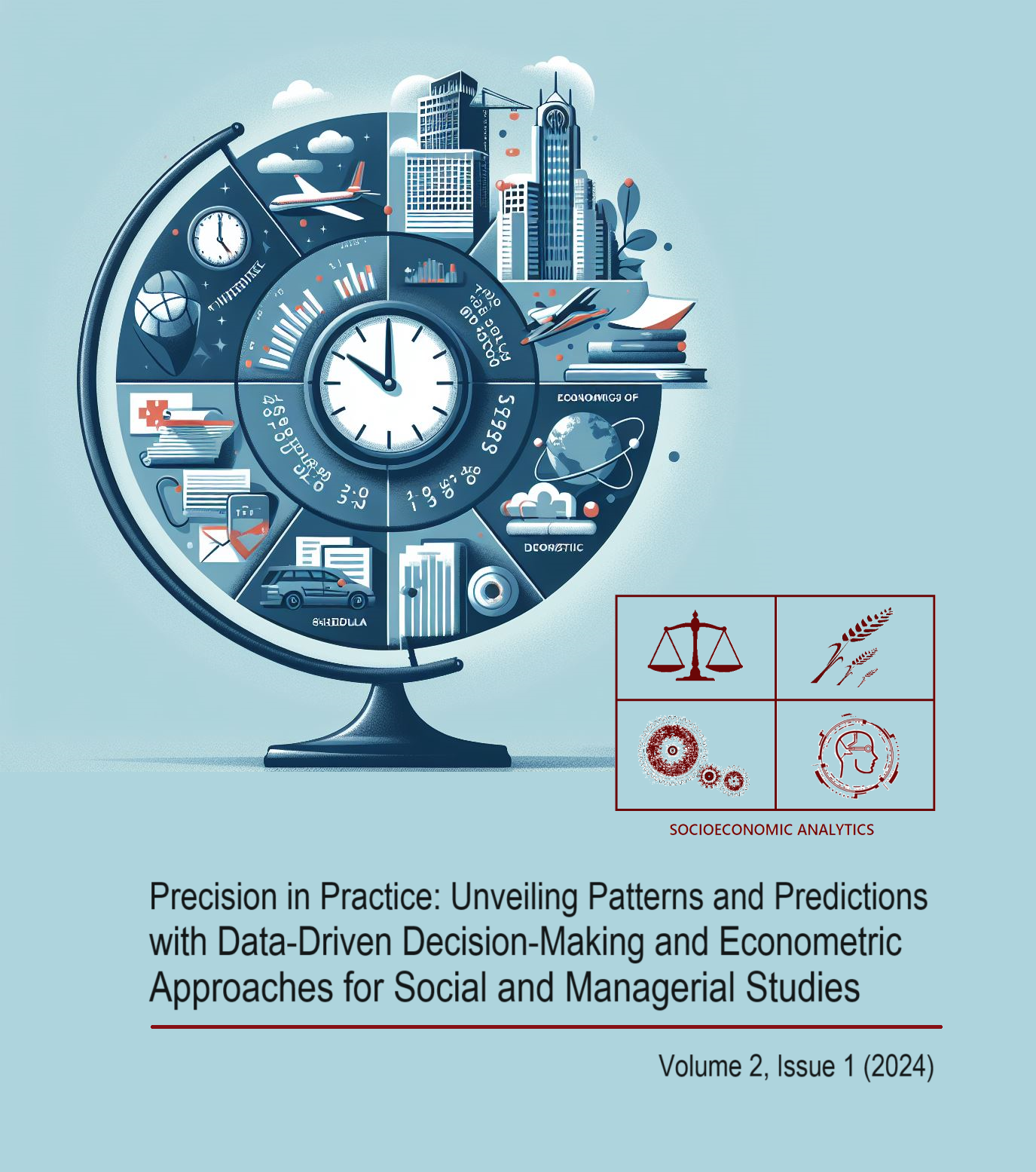Predicting bitcoin cryptocurrency price behavior based on ARIMA and NNAR modelling
DOI:
https://doi.org/10.51359/2965-4661.2024.265073Keywords:
ARIMA, NNAR, Time Series Analysis, Bitcoin, predictionAbstract
The development of models to predict the behavior of the Bitcoin cryptocurrency, using a public database (Yahoo! Finance) to predict price trends. The models used were ARIMA and NNAR with the validation of the models being carried out based on the daily closing values of the asset. Both models did not differ significantly, however the adjusted model NNAR (2.2) had a slightly better fit to the original data series, presenting an MPE (Mean Percentage Error) of -0.102.
References
Azari, A. (2019). Bitcoin Price Prediction: An ARIMA Approach. http://arxiv.org/abs/1904.05315
Box, G. E., Jenkins, G. M., Reinsel, G. C., & Ljung, G. M. (2015).Time series analysis: forecasting and control. John Wiley& Sons.
Cruz, D. V., Cunha Filho, M., & Falcao, A. P. S. T. (2014). Controle Estatístico de processos aplicado ao monitoramento do pH e turbidez das águas no abastecimento de Campina Grande-PB.Rev. Bras. Biom,32(4), 459-477.
Duarte, F. L. C., & de Almeida Lima, N. C. (2019). Redes Neurais Aplicadas Na Predição do Preço do Ether: MLP vs bi-LSTM.Anais do Encontro de Computação do Oeste Potiguar ECOP/UFERSA (ISSN 2526-7574),1(3).
Finance, Y. (2020). Yahoo Finance.Retrieved from finance. yahoo. com: https://finance. yahoo. com/recent-quotes, (acesso em 02 de novembro de 2024).
Junita, T. P., & Kartikasari, M. D. (2024). Application of the neural network autoregressive (nnar) method for forecasting the value of oil and gas exports in Indonesia. BAREKENG: Jurnal Ilmu Matematika dan Terapan,18(1), 0341-0348.
Kim, Y. B., Kim, J. G., Kim, W., Im, J. H., Kim, T. H., Kang, S. J., & Kim, C. H. (2016). Predicting fluctuations in cryptocurrency transactions based on user comments and replies. PloS one,11(8), e0161197.
Hyndman, R. J., & Athanasopoulos, G. Forecasting: Principles and Practice, 2nd edn. OTexts, Melbourne (2018).
Hutto, C., & Gilbert, E. (2014, May). Vader: A parsimonious rule-based model for sentiment analysis of social media text. InProceedings of the international AAAI conference on web and social media(Vol. 8, No. 1, pp. 216-225).
Maleki, A., Nasseri, S., Aminabad, M. S., & Hadi, M. (2018). Comparison of ARIMA and NNAR models for forecasting water treatment plant’s influent characteristics.KSCE Journal of Civil Engineering,22, 3233-3245.
McNally, S. (2016).Predicting the price of Bitcoin using Machine Learning(Doctoral dissertation, Dublin, National College of Ireland).
Morettin, P. A., & Toloi, C. M. (2018). Análise de séries temporais: modelos lineares univariados. Editora Blucher.
Nakamoto, S., & Bitcoin, A. (2008). A peer-to-peer electronic cash system.Bitcoin. URL: https://bitcoin. org/bitcoin. pdf,4(2), 15.
NUBANK. Menu. Disponível em: https://nubank.com.br/. Acesso em 15 nov. 2024.
Radityo, A., Munajat, Q., & Budi, I. (2017, October). Prediction of Bitcoin exchange rate to American dollar using artificial neural network methods. In 2017 international conference on advanced computer science and information systems (ICACSIS)(pp. 433-438). IEEE.
Shintate, T., & Pichl, L. (2019). Trend prediction classification for high frequency bitcoin time series with deep learning.Journal of Risk and Financial Management,12(1), 17.
Thoplan, R. (2014). Simple v/s sophisticated methods of forecasting for mauritius monthly tourist arrival data.International Journal of Statistics and Applications,4(5), 217-223.
Ulrich, F. (1892). Bitcoin-a moeda na era digital.Journal, volume,2, 239.19.Velankar, S., Valecha, S., & Maji, S. (2018). Bitcoin price prediction using machine learning. In 2018 20th International Conference on Advanced Communication Technology (ICACT)(pp. 144-147). IEEE.
Downloads
Additional Files
Published
Issue
Section
License
Copyright (c) 2024 Patricia Virginia de Santana Lima, David Venâncio da Cruz, Albaro Ramon Paiva Sanz

This work is licensed under a Creative Commons Attribution-NonCommercial-NoDerivatives 4.0 International License.
Authors who publish with Socioeconomic Analytics retain the copyright of their work and agree to license it under a Creative Commons Attribution-NonCommercial-NoDerivatives 4.0 International (CC BY-NC-ND 4.0) license. This means that the work can be shared, copied, and redistributed in any medium or format, as long as it is not used for commercial purposes, and the original work is properly cited. The work cannot be changed in any way or used to create derivative works.










